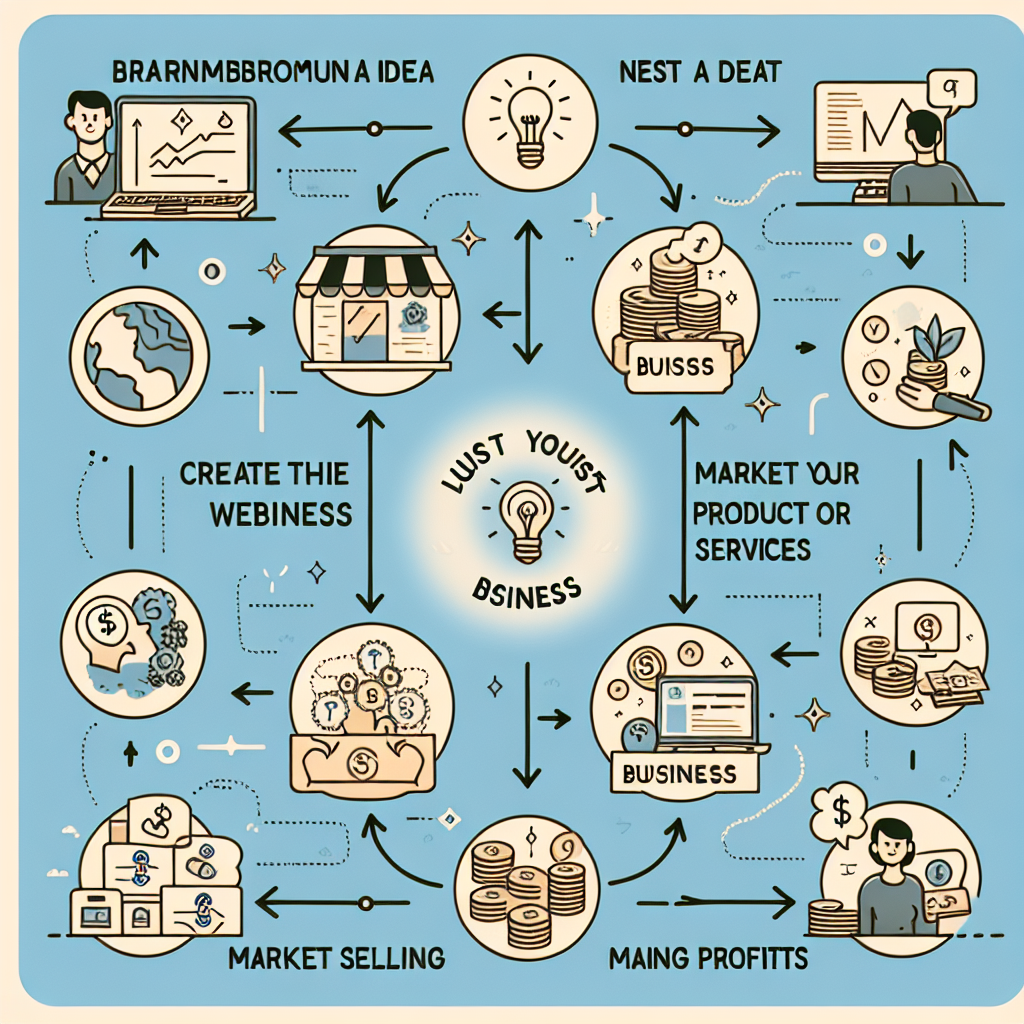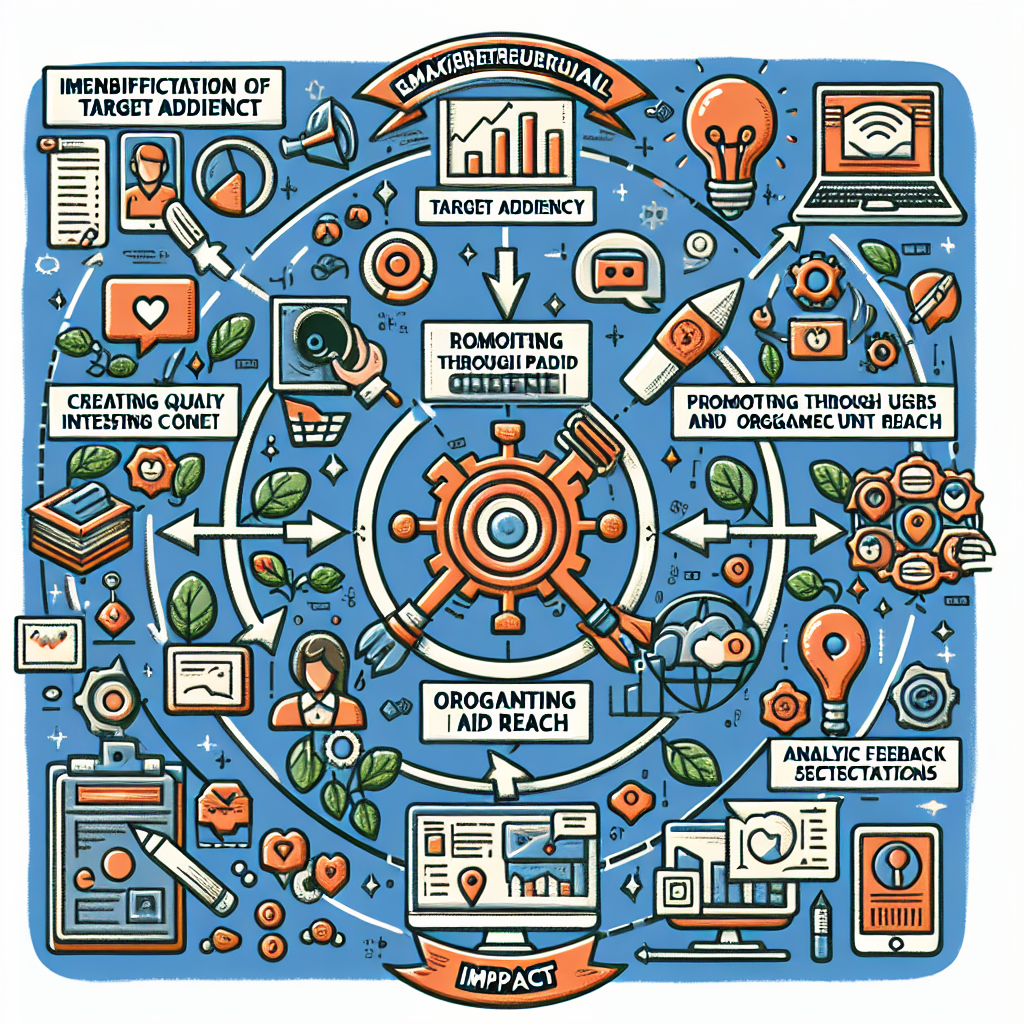Diversification: The Key to a Recession-Proof Investment Portfolio
Understanding Diversification: The Foundation of a Resilient Portfolio
Diversification: The Key to a Recession-Proof Investment Portfolio
Understanding Diversification: The Foundation of a Resilient Portfolio
When it comes to building a resilient investment portfolio, diversification stands out as a fundamental strategy. At its core, diversification involves spreading investments across various asset classes, sectors, and geographical regions to mitigate risk. By not putting all your eggs in one basket, you can protect your portfolio from significant losses during economic downturns. This approach is particularly crucial during recessions, when market volatility tends to be high and the performance of different assets can vary widely.
To begin with, diversification helps in balancing the risk and reward in your portfolio. For instance, while stocks can offer high returns, they also come with higher risk. On the other hand, bonds are generally considered safer but provide lower returns. By combining stocks, bonds, and other asset classes like real estate or commodities, you can create a more stable portfolio. This mix ensures that if one asset class underperforms, the others can potentially offset the losses, thereby reducing the overall risk.
Moreover, diversification is not just about mixing different asset classes; it also involves spreading investments within each class. For example, within the stock market, you can diversify by investing in various sectors such as technology, healthcare, and consumer goods. This sectoral diversification ensures that a downturn in one industry does not drastically affect your entire portfolio. Similarly, within the bond market, you can diversify by including government bonds, corporate bonds, and municipal bonds, each with different risk and return profiles.
In addition to asset class and sectoral diversification, geographical diversification is another critical aspect. Investing in international markets can provide exposure to different economic cycles and growth opportunities. While one country’s economy might be in recession, another might be experiencing growth. By holding investments in various countries, you can benefit from global economic trends and reduce the impact of a recession in any single region.
Transitioning to the practical side of diversification, it is essential to regularly review and rebalance your portfolio. Market conditions and personal financial goals can change over time, making it necessary to adjust your investments accordingly. Rebalancing involves selling some assets and buying others to maintain your desired level of diversification. This process helps in locking in gains from well-performing investments and reinvesting in underperforming ones, ensuring that your portfolio remains aligned with your risk tolerance and investment objectives.
Furthermore, diversification can also be achieved through investment vehicles like mutual funds and exchange-traded funds (ETFs). These funds pool money from multiple investors to buy a diversified portfolio of assets. They offer an easy and cost-effective way to achieve diversification, especially for individual investors who may not have the resources to buy a wide range of assets on their own. By investing in mutual funds or ETFs, you can gain exposure to a broad array of securities, managed by professional fund managers who make informed decisions on your behalf.
In conclusion, diversification is a cornerstone of a recession-proof investment portfolio. By spreading investments across different asset classes, sectors, and geographical regions, you can mitigate risk and enhance the stability of your portfolio. Regularly reviewing and rebalancing your investments, along with utilizing diversified investment vehicles like mutual funds and ETFs, can further strengthen your financial resilience. Embracing diversification not only helps in weathering economic downturns but also positions you for long-term growth and success in the ever-changing financial landscape.
Sector Diversification: Spreading Risk Across Industries
Diversification: The Key to a Recession-Proof Investment Portfolio
When it comes to building a recession-proof investment portfolio, one of the most effective strategies is sector diversification. This approach involves spreading investments across various industries to mitigate risk and enhance potential returns. By not putting all your eggs in one basket, you can better protect your portfolio from the volatility that often accompanies economic downturns.
To begin with, it’s important to understand why sector diversification is so crucial. Different industries tend to perform differently under varying economic conditions. For instance, while the technology sector might thrive during periods of economic growth, it could suffer during a recession. Conversely, sectors like utilities or consumer staples often remain stable or even perform well during economic downturns because they provide essential goods and services that people continue to need regardless of the economic climate. By investing in a mix of sectors, you can balance out the highs and lows, thereby reducing the overall risk to your portfolio.
Moreover, sector diversification can also provide opportunities for growth. While some industries may be struggling, others could be experiencing a boom. For example, during the COVID-19 pandemic, the healthcare and technology sectors saw significant growth due to increased demand for medical supplies and digital services. By having investments in these sectors, you could have capitalized on these growth opportunities, even as other parts of the economy were faltering.
Transitioning to the practical aspects of sector diversification, it’s essential to conduct thorough research before making investment decisions. Look into the historical performance of different sectors, as well as their future growth prospects. Consider factors such as technological advancements, regulatory changes, and consumer trends that could impact various industries. This will help you make informed decisions about which sectors to include in your portfolio.
Additionally, it’s beneficial to regularly review and adjust your portfolio to ensure it remains well-diversified. Economic conditions and market dynamics are constantly changing, so what might have been a well-balanced portfolio a year ago could now be overly concentrated in one sector. By periodically reassessing your investments, you can make necessary adjustments to maintain a diversified portfolio that aligns with your financial goals and risk tolerance.
Another important aspect to consider is the use of investment vehicles that inherently offer sector diversification. Mutual funds and exchange-traded funds (ETFs) are excellent options for investors looking to diversify across multiple sectors without having to pick individual stocks. These funds pool money from many investors to buy a diversified portfolio of assets, spreading risk across various industries. This can be particularly advantageous for those who may not have the time or expertise to manage a diversified portfolio on their own.
Furthermore, it’s worth noting that sector diversification doesn’t mean you should avoid investing in sectors that are currently underperforming. In fact, these sectors might offer attractive investment opportunities if you believe they have strong long-term growth potential. The key is to strike a balance between high-growth sectors and more stable, defensive sectors to create a well-rounded portfolio.
In conclusion, sector diversification is a fundamental strategy for building a recession-proof investment portfolio. By spreading your investments across various industries, you can mitigate risk, capitalize on growth opportunities, and better navigate the uncertainties of the economic landscape. With careful research, regular portfolio reviews, and the use of diversified investment vehicles, you can create a resilient portfolio that stands the test of time.
Geographic Diversification: Investing Beyond Borders
When it comes to building a recession-proof investment portfolio, one of the most effective strategies is geographic diversification. By spreading investments across various regions and countries, investors can mitigate risks associated with economic downturns in any single market. This approach not only enhances the potential for stable returns but also opens up opportunities for growth in emerging markets.
To begin with, geographic diversification helps to balance the risks inherent in different economies. For instance, while one country might be experiencing a recession, another might be in a phase of economic expansion. By investing in multiple regions, the negative impact of a downturn in one area can be offset by positive performance in another. This balance is crucial for maintaining a steady portfolio value, especially during turbulent times.
Moreover, different countries often have varying economic cycles. While the United States might be facing a slowdown, countries in Asia or Europe could be on an upward trajectory. By diversifying geographically, investors can take advantage of these differing cycles, ensuring that their portfolio remains resilient. This strategy is particularly beneficial for long-term investors who are looking to weather the ups and downs of the global economy.
In addition to balancing risks, geographic diversification also provides access to a broader range of investment opportunities. Emerging markets, for example, offer the potential for high returns due to their rapid economic growth. Countries like China, India, and Brazil have shown significant progress over the past few decades, and investing in these regions can yield substantial gains. However, it’s important to note that while the potential for high returns exists, so does the risk. Therefore, a well-diversified portfolio should include a mix of both developed and emerging markets.
Furthermore, investing beyond borders allows investors to benefit from different sectors that might be more prominent in certain regions. For example, technology companies in the United States, automotive industries in Germany, or natural resource sectors in Canada and Australia. By tapping into these diverse industries, investors can enhance their portfolio’s performance and reduce dependency on any single sector.
Another advantage of geographic diversification is the potential for currency diversification. When investments are spread across different countries, they are also exposed to various currencies. This can be beneficial in times of currency fluctuations, as gains in one currency can offset losses in another. However, it’s essential to be mindful of the risks associated with currency exchange rates and consider hedging strategies to protect against adverse movements.
While the benefits of geographic diversification are clear, it’s important to approach this strategy with careful planning and research. Understanding the economic conditions, political stability, and market dynamics of different regions is crucial for making informed investment decisions. Additionally, working with a financial advisor who has expertise in international markets can provide valuable insights and guidance.
In conclusion, geographic diversification is a key component of a recession-proof investment portfolio. By spreading investments across various regions and countries, investors can balance risks, access a broader range of opportunities, and benefit from different economic cycles and sectors. While this strategy requires careful planning and research, the potential rewards make it a worthwhile endeavor for those looking to build a resilient and growth-oriented portfolio.
Asset Class Diversification: Balancing Stocks, Bonds, and Alternatives
Diversification: The Key to a Recession-Proof Investment Portfolio
When it comes to building a recession-proof investment portfolio, asset class diversification is a strategy that stands out for its effectiveness and reliability. By balancing stocks, bonds, and alternative investments, you can mitigate risks and enhance the potential for returns, even during economic downturns. Understanding how to diversify across these asset classes is crucial for any investor aiming to weather the financial storms that inevitably arise.
To begin with, stocks are often the cornerstone of any investment portfolio. They offer the potential for high returns, especially over the long term. However, stocks are also subject to market volatility, which can be particularly pronounced during a recession. This is where the importance of diversification becomes evident. By not putting all your eggs in one basket, you can reduce the impact of a downturn in the stock market on your overall portfolio. For instance, while technology stocks might suffer during a recession, consumer staples or healthcare stocks might perform better, providing a cushion against losses.
Transitioning from stocks to bonds, these fixed-income securities are generally considered safer investments. Bonds provide regular interest payments and return the principal amount at maturity, making them a more stable option compared to stocks. During a recession, bonds often perform better because they are less affected by market volatility. Government bonds, in particular, are seen as a safe haven during economic uncertainty. By including bonds in your portfolio, you can achieve a balance that reduces risk while still offering the potential for steady returns.
In addition to stocks and bonds, alternative investments can play a crucial role in diversification. These include assets like real estate, commodities, and hedge funds, which often have low correlation with traditional asset classes. Real estate, for example, can provide a steady income stream through rental payments and has the potential for capital appreciation. Commodities like gold and silver are often seen as a hedge against inflation and can perform well during economic downturns. Hedge funds, although more complex and less accessible to the average investor, offer strategies that can generate positive returns regardless of market conditions.
Moreover, the inclusion of alternative investments can further insulate your portfolio from market volatility. For instance, during the 2008 financial crisis, while stock markets plummeted, gold prices surged, providing a buffer for those who had invested in the precious metal. Similarly, real estate investments can offer stability through rental income, even when property values fluctuate.
It’s also worth noting that diversification is not a one-time activity but an ongoing process. As market conditions change, so should your portfolio. Regularly reviewing and rebalancing your investments ensures that you maintain the desired level of diversification. This might involve selling assets that have performed well and buying those that have underperformed to maintain the right balance between stocks, bonds, and alternatives.
In conclusion, asset class diversification is a fundamental strategy for creating a recession-proof investment portfolio. By balancing stocks, bonds, and alternative investments, you can mitigate risks and enhance returns, even during economic downturns. This approach not only provides a safety net against market volatility but also offers the potential for steady growth over the long term. So, whether you’re a seasoned investor or just starting, embracing diversification can help you navigate the uncertainties of the financial world with greater confidence.
The Role of Diversification in Mitigating Market Volatility
Diversification: The Key to a Recession-Proof Investment Portfolio
When it comes to investing, one of the most crucial strategies to mitigate market volatility is diversification. This approach involves spreading investments across various asset classes, sectors, and geographical regions to reduce risk. By not putting all your eggs in one basket, you can better protect your portfolio from the unpredictable swings of the market. Understanding the role of diversification in mitigating market volatility is essential for any investor looking to build a recession-proof portfolio.
To begin with, diversification helps in balancing the risk and reward ratio. When you invest in a variety of assets, the poor performance of one investment can be offset by the better performance of another. For instance, if you have investments in both stocks and bonds, a downturn in the stock market might be cushioned by the stability of bonds. This balance is particularly important during periods of economic uncertainty, such as a recession, when market volatility tends to be higher.
Moreover, diversification allows you to take advantage of different economic cycles. Different sectors and asset classes often perform differently depending on the economic environment. For example, during a recession, consumer staples and healthcare stocks might perform better than luxury goods or technology stocks. By having a diversified portfolio, you can benefit from the growth of various sectors at different times, thereby reducing the overall impact of market volatility on your investments.
In addition to sector diversification, geographical diversification is another critical aspect. Investing in international markets can provide exposure to different economic conditions and growth opportunities. While one country’s economy might be struggling, another’s could be thriving. By diversifying globally, you can reduce the risk associated with any single country’s economic performance. This global approach not only mitigates risk but also opens up new avenues for growth that might not be available in your home market.
Furthermore, diversification is not just about spreading investments across different asset classes and regions; it also involves varying the types of investments within those categories. For example, within the stock market, you can diversify by investing in large-cap, mid-cap, and small-cap stocks. Each of these categories has its own risk and return characteristics, and by including a mix of them in your portfolio, you can further reduce volatility. Similarly, within the bond market, you can diversify by investing in government bonds, corporate bonds, and municipal bonds, each offering different levels of risk and return.
Another important aspect to consider is the role of alternative investments in diversification. Assets such as real estate, commodities, and hedge funds can provide additional layers of diversification. These investments often have low correlations with traditional asset classes like stocks and bonds, meaning they can perform well even when the broader market is struggling. Including alternative investments in your portfolio can therefore provide an extra buffer against market volatility.
In conclusion, diversification is a powerful tool for mitigating market volatility and building a recession-proof investment portfolio. By spreading your investments across various asset classes, sectors, and geographical regions, you can balance risk and reward, take advantage of different economic cycles, and reduce the impact of any single investment’s poor performance. Whether you are a seasoned investor or just starting, understanding and implementing diversification can help you navigate the uncertainties of the market with greater confidence and peace of mind.




















